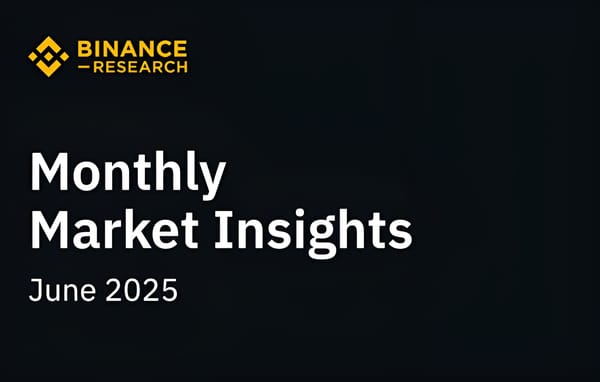Tokenized Real-World Assets in 2025: Explosive Growth & Integration with DeFi




The world of tokenized Real-World Assets (RWAs) is transforming rapidly as 2025 unfolds. There's been an incredible surge in how traditional financial assets are brought into the decentralized sphere. By the end of May 2025, the market capitalization of tokenized RWAs had skyrocketed to over US$23 billion—an impressive leap from US$8.6 billion at the start of the year. This monumental growth of more than 260 percent isn't just about the numbers; it's a testament to the growing investor confidence and the robust blockchain infrastructure that promises to revolutionize the way we handle financial instruments.
May alone witnessed a remarkable 6.5 percent increase in market momentum, showcasing how this sector is rapidly adapting and thriving even amidst evolving market conditions. It's not just a fleeting trend; it's a defining evolution in how assets create value and opportunity in a digital-first world. The market composition reveals that the lion's share belongs to two primary asset categories, with figures strategically excluding stablecoins and focusing strictly on tokenized forms of traditional instruments, thus spotlighting a transformative shift in how institutional-grade assets are perceived and utilized within the digital landscape.
The market composition of tokenized Real-World Assets in 2025 showcases a fascinating evolution in the landscape of decentralized finance. Two main asset categories are predominantly shaping this sector, adding dynamic new dimensions to blockchain-based financial systems. By capturing the essence of traditional finance and integrating it with the decentralized ethos, the composition of the market is not only reshaping how assets are perceived but also paving the way for a more interconnected global financial system.
The landscape of tokenized RWAs is rapidly being shaped by a select group of pioneering protocols. These leaders are redefining the decentralized financial ecosystem through innovation and strategic integration, drawing increased attention from institutional investors who recognize the potential for sustainable returns outside traditional volatile token incentives.
Launched in January 2025, Tradable swiftly established itself as a formidable force in the tokenized asset market, currently boasting over US$2 billion in tokenized assets. The protocol harnesses ZKSync's scalability and privacy capabilities, providing compliance while seamlessly onboarding institutional-grade issuers. This strategic advantage has solidified Tradable's standing as a critical player in the RWA sector.
Meanwhile, various BUIDL Fund initiatives are at the forefront of tokenized U.S. Treasury investments, commanding US$2.9 billion in assets as of May 2025. This represents a 4.5x growth since the start of the year, showcasing a robust trajectory. Game-changing integrations with decentralized lending platforms allow for new avenues of lending and borrowing against tokenized treasuries, further embedding RWAs into the DeFi ecosystem.
Centrifuge and Securitize are breaking ground with tokenized funds on Solana, indicating a shift towards diversifying the RWA landscape beyond Ethereum-based ecosystems. These initiatives foster greater interoperability with Solana-native DeFi protocols such as Kamino Finance, enhancing both the utility and liquidity of tokenized assets. Their approach offers a glimpse into potential mass retail adoption facilitated by performant and cost-effective blockchain networks.
The integration of Real-World Assets into Decentralized Finance marks a groundbreaking transition in the crypto-financial landscape. This evolution presents a promising set of opportunities and solutions to some of the industry's core challenges. Traditionally, DeFi has primarily depended on highly volatile token incentives for generating yield. By infusing RWAs, such as corporate debt and government bonds, DeFi can access sustainable income streams rooted in real-world credit markets, treasury interest, and loan repayments.
The incorporation of RWAs, often backed by legally binding agreements or even sovereign guarantees, introduces assets with reduced volatility and credit risk exposure. This development expands DeFi's attractiveness to institutional investors seeking more secure investment opportunities. The inclusion of familiar financial instruments like U.S. Treasuries serves as a gateway for traditional institutions eager to explore blockchain opportunities without venturing into speculative token markets.
Historically, DeFi has been criticized as a closed-loop system, heavily reliant on the internal cycling of crypto-native assets. With the introduction of tokenized RWAs, this self-referential model is being disrupted significantly. This pivotal shift propels DeFi from a speculative sphere into a vibrant financial environment that encompasses both traditional market interfaces and the innate benefits of on-chain transparency and programmability.
The tokenized Real-World Asset market, while experiencing dramatic growth, is not without its challenges. As the sector climbs to new heights in 2025, several obstacles must be navigated to maintain momentum and stability. One of the primary hurdles is the fragmented nature of jurisdictional laws which complicates the enforceability of tokenized contracts across borders. As different legal frameworks vie for clarity, harmonizing these differences remains a key obstacle.
Unlike native crypto assets that thrive on 24/7 liquidity, RWAs are often hampered by slower liquidity flows. This necessitates innovative approaches at the protocol level to develop seamless redemption and exit strategies. Bridging physical assets with digital systems raises pressing questions about asset security, auditing processes, and trust management among intermediaries. As these worlds merge, the industry must bolster safeguards to protect investor assets.
The high-value nature of tokenized RWAs scaling into decentralized finance platforms demands absolute technical reliability and adept protocol governance to thwart vulnerabilities that could compromise such substantial financial structures. Despite these hurdles, the market's direction is promising. Regulatory landscapes are starting to offer more clarity, infrastructure developments are underway, and the pull from institutional as well as DeFi-native investors continues to intensify. Should these trends persist, tokenized RWAs are primed to solidify their status as a cornerstone in the realm of on-chain finance, setting the stage for remarkable transformations in global capital markets.
https://www.binance.com/en/research/analysis/monthly-market-insights-2025-06/
Comments